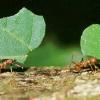- Formiculture.com
- Forums
- Gallery
- Members
- Member Map
- Chat

Adding sand to OmniNest, viable?
Started By
rarankhan
, Jan 23 2017 9:20 AM
10 replies to this topic
#1
 Offline
-
Posted January 23 2017 - 9:20 AM
Offline
-
Posted January 23 2017 - 9:20 AM
Hey guys is adding sand to the omni nest ok? Or would the sand get stuck between layers scratching them and affect air flow as I was once told by someone.
#2
 Offline
-
Posted January 23 2017 - 11:09 AM
Offline
-
Posted January 23 2017 - 11:09 AM
The sand will most definitely start going between the layers. I do not own one but have similar stuff, if you really want to add something into it, I would suggest coconut husk, or small bits of bark. Something thicker, but not too think, if you know what I mean.
Owner and operator of Ant-topia, find me on Facebook at https://m.facebook.com/ant-topia
#3
 Offline
-
Posted January 23 2017 - 11:16 AM
Offline
-
Posted January 23 2017 - 11:16 AM
The sand will most definitely start going between the layers. I do not own one but have similar stuff, if you really want to add something into it, I would suggest coconut husk, or small bits of bark. Something thicker, but not too think, if you know what I mean.
For a smaller species like Formica pallidefulva would this be good:
https://www.amazon.c...ds=coconut husk.
#4
 Offline
-
Posted January 23 2017 - 11:18 AM
Offline
-
Posted January 23 2017 - 11:18 AM
The sand will most definitely start going between the layers. I do not own one but have similar stuff, if you really want to add something into it, I would suggest coconut husk, or small bits of bark. Something thicker, but not too think, if you know what I mean.
For a smaller species like Formica pallidefulva would this be good:
https://www.amazon.c...ds=coconut husk.
Should work fine.
- rarankhan likes this
Owner and operator of Ant-topia, find me on Facebook at https://m.facebook.com/ant-topia
#5
 Offline
-
Posted January 23 2017 - 11:22 AM
Offline
-
Posted January 23 2017 - 11:22 AM
The sand will most definitely start going between the layers. I do not own one but have similar stuff, if you really want to add something into it, I would suggest coconut husk, or small bits of bark. Something thicker, but not too think, if you know what I mean.
For a smaller species like Formica pallidefulva would this be good:
https://www.amazon.c...ds=coconut husk.
Should work fine.
Ok thank you.
#6
 Offline
-
Posted January 23 2017 - 12:11 PM
Offline
-
Posted January 23 2017 - 12:11 PM
Has a biodegradable medium like coconut husk or bark ever presented any problems? In certain applications it needs to be changed periodically, but I'm curious as to how it holds up in a formicarium.
#7
 Offline
-
Posted January 23 2017 - 12:38 PM
Offline
-
Posted January 23 2017 - 12:38 PM
Has a biodegradable medium like coconut husk or bark ever presented any problems? In certain applications it needs to be changed periodically, but I'm curious as to how it holds up in a formicarium.
I heard it molds, so I'm not sure if I wanna take the risk. Been keeping tabs on the ant-keeping hobby for the past few years, but finally got my own queen so bit new to all of this and probably couldn't handle mold or stuff properly.
Edited by rarankhan, January 23 2017 - 1:00 PM.
#8
 Offline
-
Posted January 23 2017 - 12:45 PM
Offline
-
Posted January 23 2017 - 12:45 PM
I actually have really good luck with peat moss.
Peat moss doesn't mold.
It holds water really well.
Every ant I've used thus far (Acromyrmex versicolor, Pogonomyrmex rugosus, Pheidole megacephala) love it.
If you use this, as a huge warning (learned the hard way). Peat moss when dry is like a dried out, crispy, bone hard sponge. It repels water when dry, making some of the wet parts a wet mess, and the other a dry dusty mess. You need to soak the peat moss before using it, and then you can use it. Once it is soaked, it dries VERY VERY slow, as it holds water incredibly well. It will however still dry after a while, so it still has to touch something wet so it can hydrate itself.
#9
 Offline
-
Posted January 23 2017 - 12:59 PM
Offline
-
Posted January 23 2017 - 12:59 PM
I actually have really good luck with peat moss.
Peat moss doesn't mold.
It holds water really well.
Every ant I've used thus far (Acromyrmex versicolor, Pogonomyrmex rugosus, Pheidole megacephala) love it.
If you use this, as a huge warning (learned the hard way). Peat moss when dry is like a dried out, crispy, bone hard sponge. It repels water when dry, making some of the wet parts a wet mess, and the other a dry dusty mess. You need to soak the peat moss before using it, and then you can use it. Once it is soaked, it dries VERY VERY slow, as it holds water incredibly well. It will however still dry after a while, so it still has to touch something wet so it can hydrate itself.
Don't intend to move the ants for a few months, so how long does it take to dry, for you at least.
#10
 Offline
-
Posted January 23 2017 - 1:22 PM
Offline
-
Posted January 23 2017 - 1:22 PM
I actually have really good luck with peat moss.
Peat moss doesn't mold.
It holds water really well.
Every ant I've used thus far (Acromyrmex versicolor, Pogonomyrmex rugosus, Pheidole megacephala) love it.
If you use this, as a huge warning (learned the hard way). Peat moss when dry is like a dried out, crispy, bone hard sponge. It repels water when dry, making some of the wet parts a wet mess, and the other a dry dusty mess. You need to soak the peat moss before using it, and then you can use it. Once it is soaked, it dries VERY VERY slow, as it holds water incredibly well. It will however still dry after a while, so it still has to touch something wet so it can hydrate itself.
Don't intend to move the ants for a few months, so how long does it take to dry, for you at least.
Well, single granules dry up pretty fast.
But, one of my tests was mostly peat moss and some sand added to it, and it took 2-3 months to dry out completely. The benefit of adding a bit of sand to the peat moss, is it allows better hydration for when it does dry up.
Another test is just 100% pure peat moss, and its been 4 months, but its getting pretty dry on top by about an inch out of 5 inches. A lot slower than with sand added (its 50% peat moss/50% sand)
I find adding something to the peat moss actually works better. Despite it drying faster. So like 75% peat moss and 25% sand or dirt would probably actually be ideal. This way its easier to re-hydrate. Its still slow to dry out, but it does eventually.
Edited by Vendayn, January 23 2017 - 1:23 PM.
#11
 Offline
-
Posted January 23 2017 - 1:55 PM
Offline
-
Posted January 23 2017 - 1:55 PM
I actually have really good luck with peat moss.
Peat moss doesn't mold.
It holds water really well.
Every ant I've used thus far (Acromyrmex versicolor, Pogonomyrmex rugosus, Pheidole megacephala) love it.
If you use this, as a huge warning (learned the hard way). Peat moss when dry is like a dried out, crispy, bone hard sponge. It repels water when dry, making some of the wet parts a wet mess, and the other a dry dusty mess. You need to soak the peat moss before using it, and then you can use it. Once it is soaked, it dries VERY VERY slow, as it holds water incredibly well. It will however still dry after a while, so it still has to touch something wet so it can hydrate itself.
Don't intend to move the ants for a few months, so how long does it take to dry, for you at least.
Well, single granules dry up pretty fast.
But, one of my tests was mostly peat moss and some sand added to it, and it took 2-3 months to dry out completely. The benefit of adding a bit of sand to the peat moss, is it allows better hydration for when it does dry up.
Another test is just 100% pure peat moss, and its been 4 months, but its getting pretty dry on top by about an inch out of 5 inches. A lot slower than with sand added (its 50% peat moss/50% sand)
I find adding something to the peat moss actually works better. Despite it drying faster. So like 75% peat moss and 25% sand or dirt would probably actually be ideal. This way its easier to re-hydrate. Its still slow to dry out, but it does eventually.
Ah I c.
0 user(s) are reading this topic
0 members, 0 guests, 0 anonymous users















